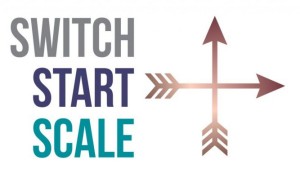Writing proposals, tenders and requests for quotes are necessity for running a business.
Whether you’re pitching to Government, business to business, and/or for public partnerships, you need to put your best foot forward and have a go.
There are key documents you need to do this and it’s best to package it as a proposal that focuses on your client or funder, with your information placed separately as underpinning evidence. This supporting documentation is often referred to as a capability statement, track record plus resumes and bios.
Your Proposal
This is the most important section and it needs to be all about your client or funder. It’ll look something like this:
- Heading or title: company name, XYZ proposal or project title
- Date: as in when it is due or submitted
- Who is it for: email, name, title and organisation
- Introduction/background: present the issue or problem, then flip it around and position it positively with your solution plus address why we’re doing this or why you should be chosen
- Approach/methodology: The order of actions and approach i.e. what do we need to do
- Next steps/partners: Future steps and who
- Roles & responsibilities: Mostly self-explanatory but who leads and completes what?
- Budget: Price on outcomes or outputs to specific deliverables
- Contact details: the easiest ways to get in touch so mostly email and/or phone
Once you’ve presented the problem, solution and plan, now it’s time to ‘prove’ why you’re the company to do it.
Your Capability Statement
This attachment showcases what you can do for your client and/or funder.
It’s a supporting document for the proposal, that’s also a selling tool. Here are the types of information you’ll need to put inside:
- A company vision and mission
- Particular areas of expertise
- Clients – who have you worked with?
- Industry experience – sector specific
- Team members – capabilities and bios
- Products and services – what is on offer
- International experience – where relevant
- Quotes and testimonials
- Key points of difference
- Industry standards, regulation and compliance – if relevant
A decision maker should be able to read this and have a good understanding about your capabilities, experience and aspirations.
Your Track Record
While not critical, a track record document captures what you’ve achieved and produced over the years. It’s easy to forget all the projects, programs and initiatives you’ve worked on, so if you have a document you update monthly, this makes it easier for you when it comes to writing proposals.
You can use a table format, listing the most important projects to help ‘sell’ you through this proposal. Pick specific items that match the project’s purpose (you might find this in the client or tender requirements). Build this over time and leverage it as a tool to help potential clients have confidence in you.
Resume & Bios
As an entrepreneur or business owner, you certainly need a resume which should also match your LinkedIn profile. Clients want to see your capability on an individual level. Make sure you keep your resume and biography up to date with work history, roles, associations, qualifications, interests, and references.
If you have a longer version of your CV (for awards, accolades, conferences, speaking, references etc.), pull out what’s most relevant for the current proposal. Check that your LinkedIn profile compliments your resume, too. You only need to write this content once and replicate it across all your marketing collateral, website and social media touchpoints.
Feel free to utilise any other attachment documents, so you can sharpen the focus of your proposal and stand out. You might be writing to a criteria for some and at other times, have free rein to include what you want.
It’s important to see this as a first draft and encourage your potential client if there is the leeway to edit or add to it as they see fit. Ask a leading question like: ‘Is this capturing what you think needs to be done?’ It might take a couple of iterations, but it’s worth the time to have your possible customer feeling confident (and you ready to go with a full plan in place).
Do you need help creating your business proposals? Book a free one-on-one coaching and mentoring session with Wendy Perry, Entrepreneurship Facilitator, Switch Start Scale.

